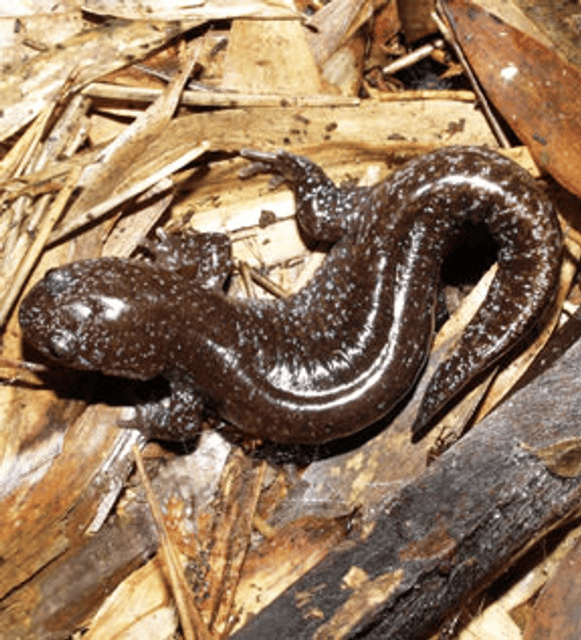

Abe’s salamander

| Abe’s salamander | |
|---|---|
|
Conservation status
|
|
| Scientific classification | |
| Kingdom: | Animalia |
| Phylum: | Chordata |
| Class: | Amphibia |
| Order: | Urodela |
| Family: | Hynobiidae |
| Genus: | Hynobius |
| Species: |
H. abei
|
| Binomial name | |
| Hynobius abei
Sato, 1934
|
|
| Abe’s salamander | |
|---|---|
|
Conservation status
|
|
| Scientific classification | |
| Kingdom: | Animalia |
| Phylum: | Chordata |
| Class: | Amphibia |
| Order: | Urodela |
| Family: | Hynobiidae |
| Genus: | Hynobius |
| Species: |
H. abei
|
| Binomial name | |
| Hynobius abei
Sato, 1934
|
|
Description
Adults measure 47–71 mm (1.9–2.8 in) in snout–vent length and 82–122 mm (3.2–4.8 in) in total length.[3]The trunk is stocky, and the limbs are relatively short. There are 11–13 costal grooves. The tail is thick at the base and laterally compressed towards the tip. Dorsal colouration is reddish brown to dark brown. There are small pale spots on the flanks and the limbs.[3][4]During the breeding season, the tail becomes very high and compressed in males.[4]Their jowls also swell, making the head to appear somewhat triangular.[3][4]
Reproduction
Reproduction starts in November–December, at the time of the snowfall. Females lay paired egg sacs containing 26 to 109 in total. The egg sacs are laid under leaves at the bottom of breeding ponds. Larval development is slow in winter but accelerates after the snow melt. Metamorphosis occurs typically in June–July, but some individuals may metamorphose later and even overwinter as larvae.[3][4]
Habitat and conservation
Abe’s salamander occurs in secondary broad-leaved evergreen and deciduous forests and in bamboo forests. Breeding takes place in pools, ditches, and springs in shaded parts of forests.[1][3][4]All populations are small and susceptible to habitat loss (e.g., one population was destroyed by construction of a road).[1]
